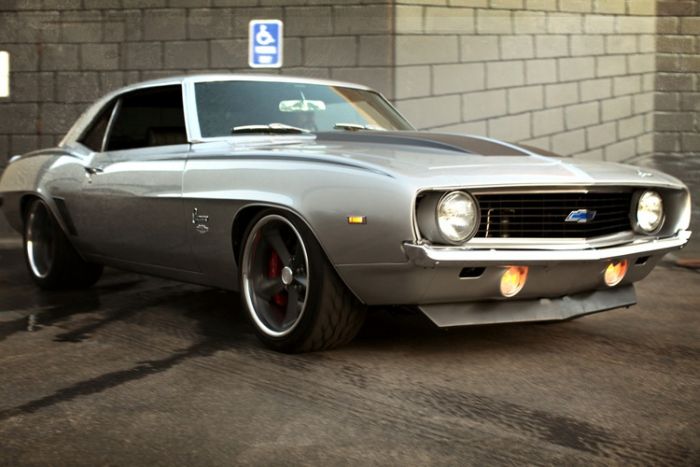|
|
American Automobile Industry
|
As bold and confident as the Big Three automakers were in the 1950s and 1960s, the American auto makers in the 1970s and 1980s stumbled badly, going from one engineering, manufacturing or marketing disaster to another. Ford reaped a public relations nightmare when it was revealed that the Pinto's gas tank was vulnerable to exploding when hit from behind. Ford knew about this vulnerability but did not design any safeguards in order to save a few dollars per vehicle. They rationalized that the cost of lawsuits would be less than the cost of redesigning the car. GM had a string of miscues starting with the Chevrolet Vega, which developed a reputation for rapidly rusting and having major problems with the aluminum engine. Cadillac damaged their reputation when the four-cylinder Cadillac Cimarron was introduced in 1981 (a gussied-up Chevrolet Cavalier at twice the price) and the "V8-6-4" engine didn't work as advertised. GM's reputation was also damaged when it revealed in 1977 that they were installing Chevrolet engines in Oldsmobiles, and lawsuits from aggrieved Oldsmobile owners followed. Likewise litigation ensued when a trio of diesel engines, designed from gasoline engines and used in GM cars from 1978 to 1985 suffered major problems. Class action lawsuits and efforts from the Federal Trade Commission resulted in buybacks of the cars from GM. Chrysler also suffered damage to its reputation when its compact cars, the Plymouth Volaré and Dodge Aspen, were developed quickly and suffered from massive recalls and poor quality.
In 1981, Japanese automakers entered into a so-called "Voluntary restraint agreement" limiting the number of autos that they could import to the U.S. to 1.68 million per year. One side effect of this quota was that the Japanese car companies began developing luxury cars that had higher profit margins, such as Toyota's Lexus, Honda's Acura,and Nissan's Infiniti divisions. Another consequence was that the Japanese car makers began opening auto production plants in the U.S., with the three largest Japanese auto manufacturers all opening production facilities by 1985. These facilities were opened primarily in the southern U.S., in states that were not union friendly. Although the U.A.W. made substantial union -organizing efforts at these plants, they remained non-union. The Big Three also began investing in and/or developing joint manufacturing facilities with several of the Japanese automakers. Ford invested in Mazda as well as setting up a joint facility with them called AutoAlliance International. Chrysler bought stock in Mitsubishi Motors and established a joint facility with them called Diamond-Star Motors. GM invested in Suzuki and Isuzu, and set up a joint manufacturing facility with Toyota under the name of Nummi.
Despite the financial and marketing upheavals during the 1970s and 1980s, the decades led to technological innovations and/or widespread use of such improvements as disc brakes, fuel injection, electronic engine control units, and electronic ignition. Front-wheel drive became the standard drive system.
By the mid-1980s, oil prices had fallen sharply, helping lead to the revitalization of the American auto industry. Under the leadership of Lee Iacocca, Chrysler Corporation mounted a comeback after its flirtation with bankruptcy in 1979. The Minivan was introduced in 1984 by Chrysler with the Plymouth Voyager and Dodge Caravan, and proved very popular. These vehicles were built on a passenger-car chassis and seated up to seven people as well as being able to hold bulky loads. Chrysler also introduced their "K-cars" in the 1980s, which came with front-wheel drive and fuel-efficient OHC engines. In 1987 Chrysler bought American Motors, which produced the Jeep. This proved to be excellent timing to take advantage of the Sport utility vehicle boom. Ford also began a comeback after losses of $3.3 billion in the early 1980s. The company introduced the very successful aerodynamic Taurus in 1985. General Motors, under the leadership of Roger Smith, was not as successful as its competitors in turning itself around and its market share fell significantly. While Ford and Chrysler were cutting production costs, GM was investing heavily in new technology. The company's attempts at overhauling its management structure and using increased technology for manufacturing production were not successful. Several large acquisitions (Electronic Data Systems and Hughes Aircraft Company) also diverted management attention away from their main industry. (Ford and Chrysler also joined in the acquisition and diversification trend, with Ford buying Jaguar Cars, Aston Martin, The Associates (a finance company), and First Nationwide Financial Corp. (a savings and loan). Chrysler purchased Lamborghini, an interest in Maserati, and Gulfstream Aerospace jets.) GM started the Saturn Corporation brand in the late 1980s as a way to gain sales from imported cars. While initially receiving a positive reception, GM later neglected to provide it much support. Around this time GM also began development on the General Motors EV1 electric car, which debuted in 1996.
|
|









